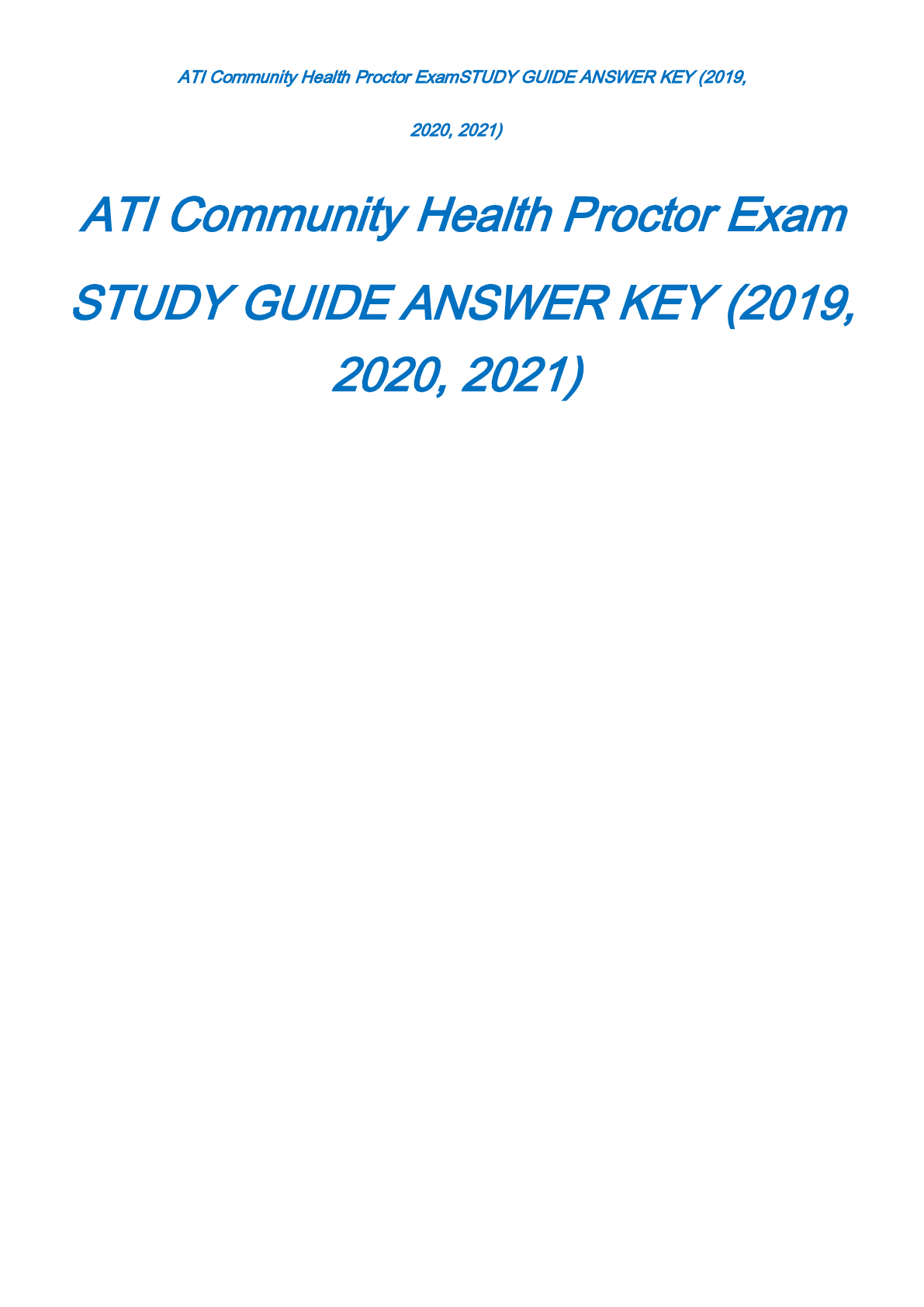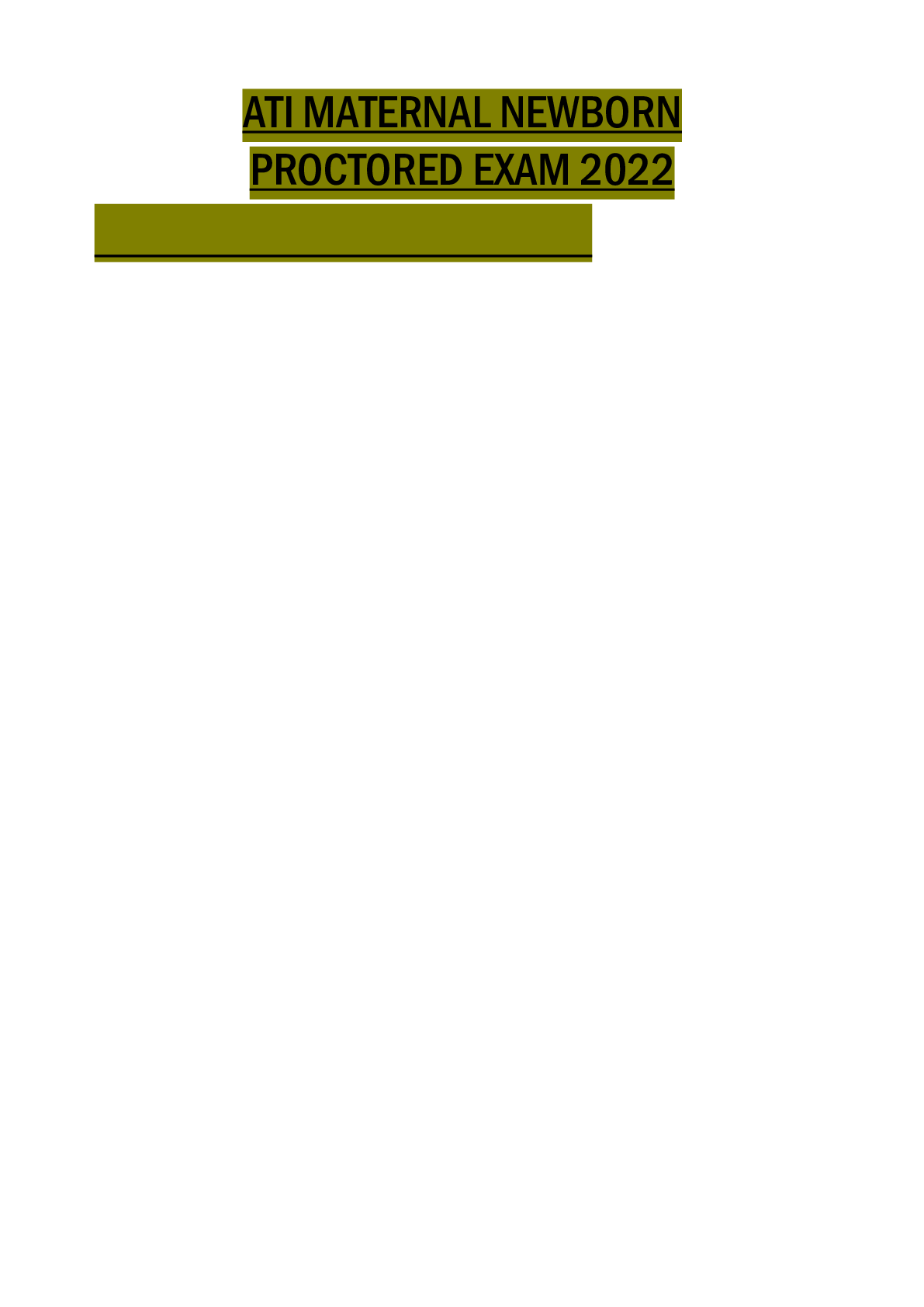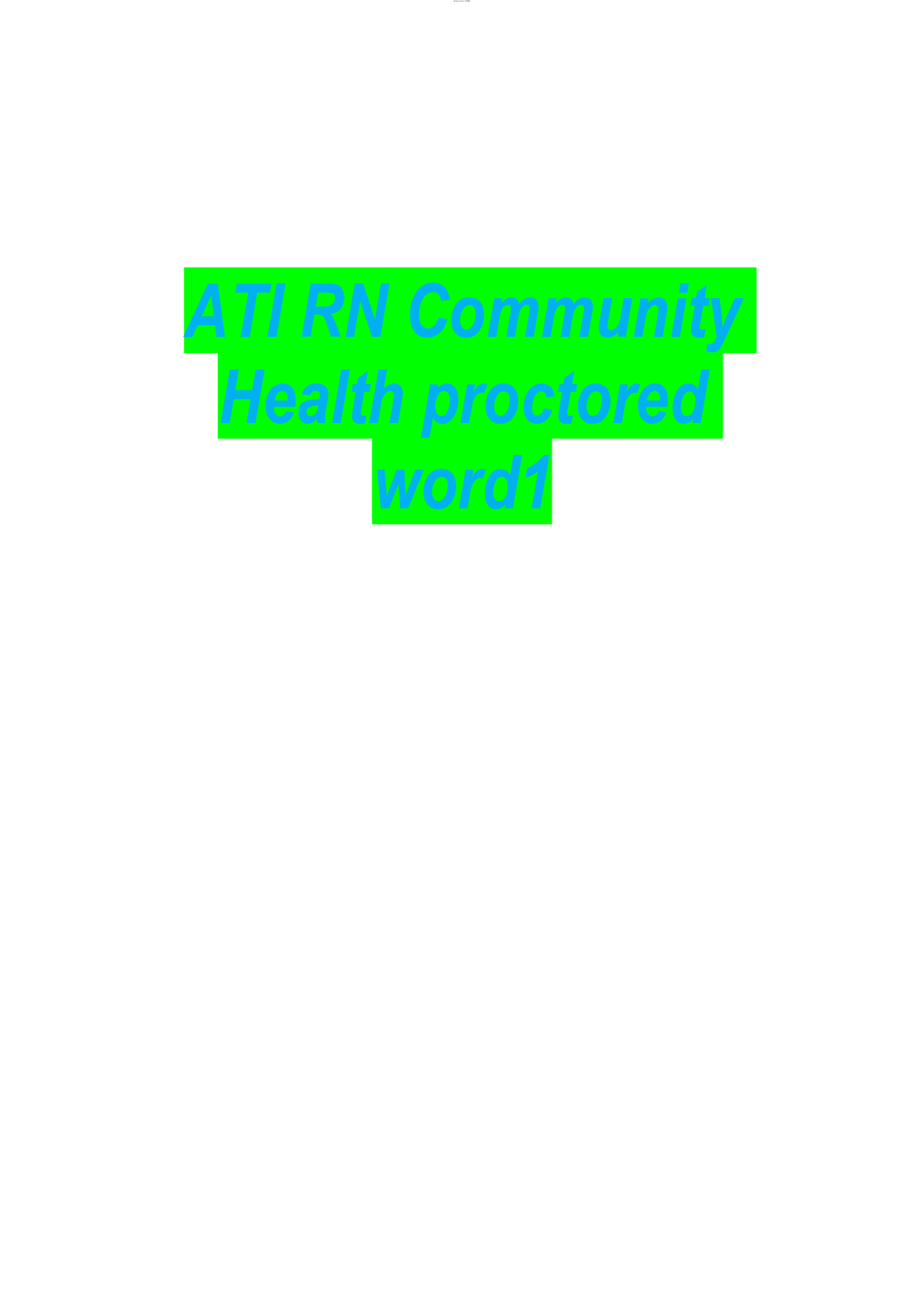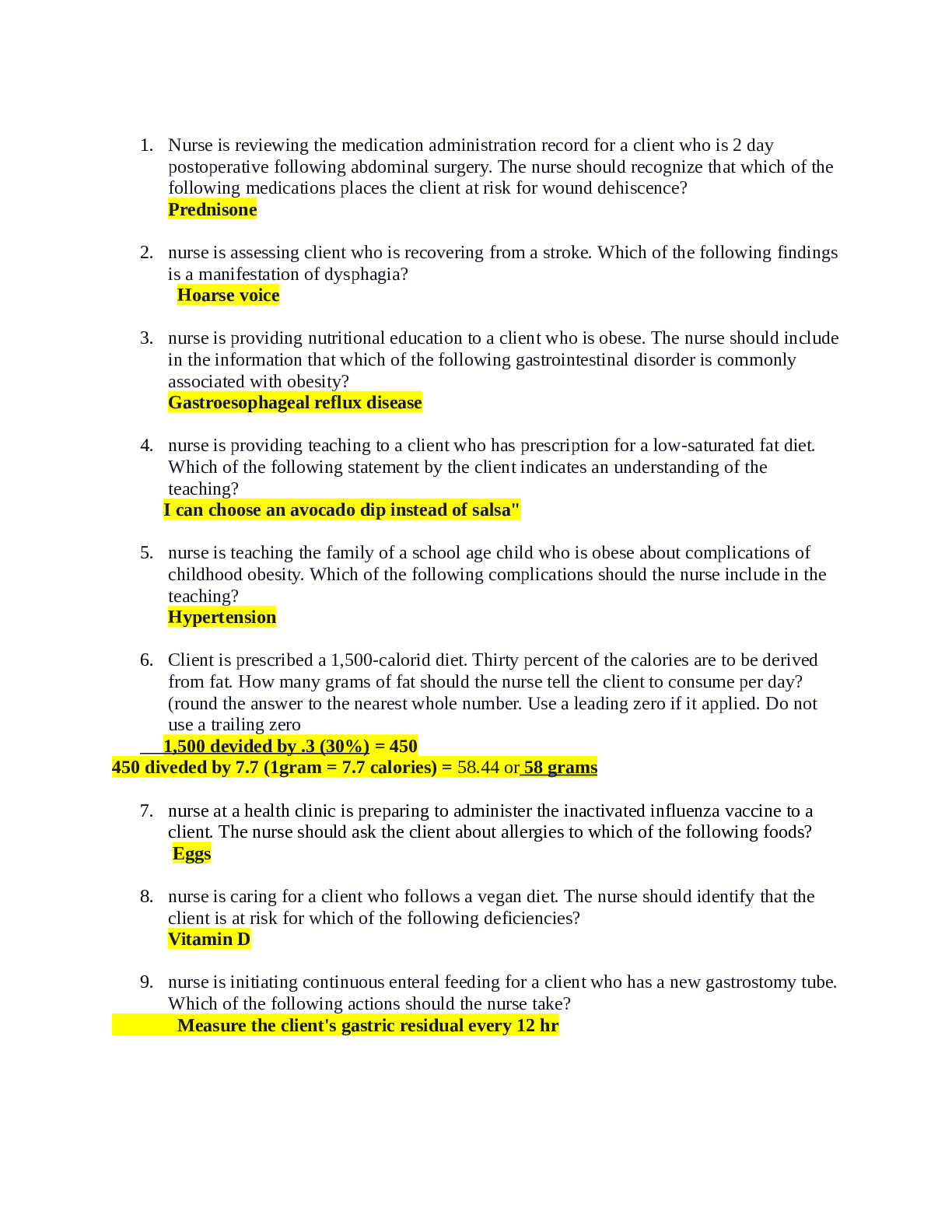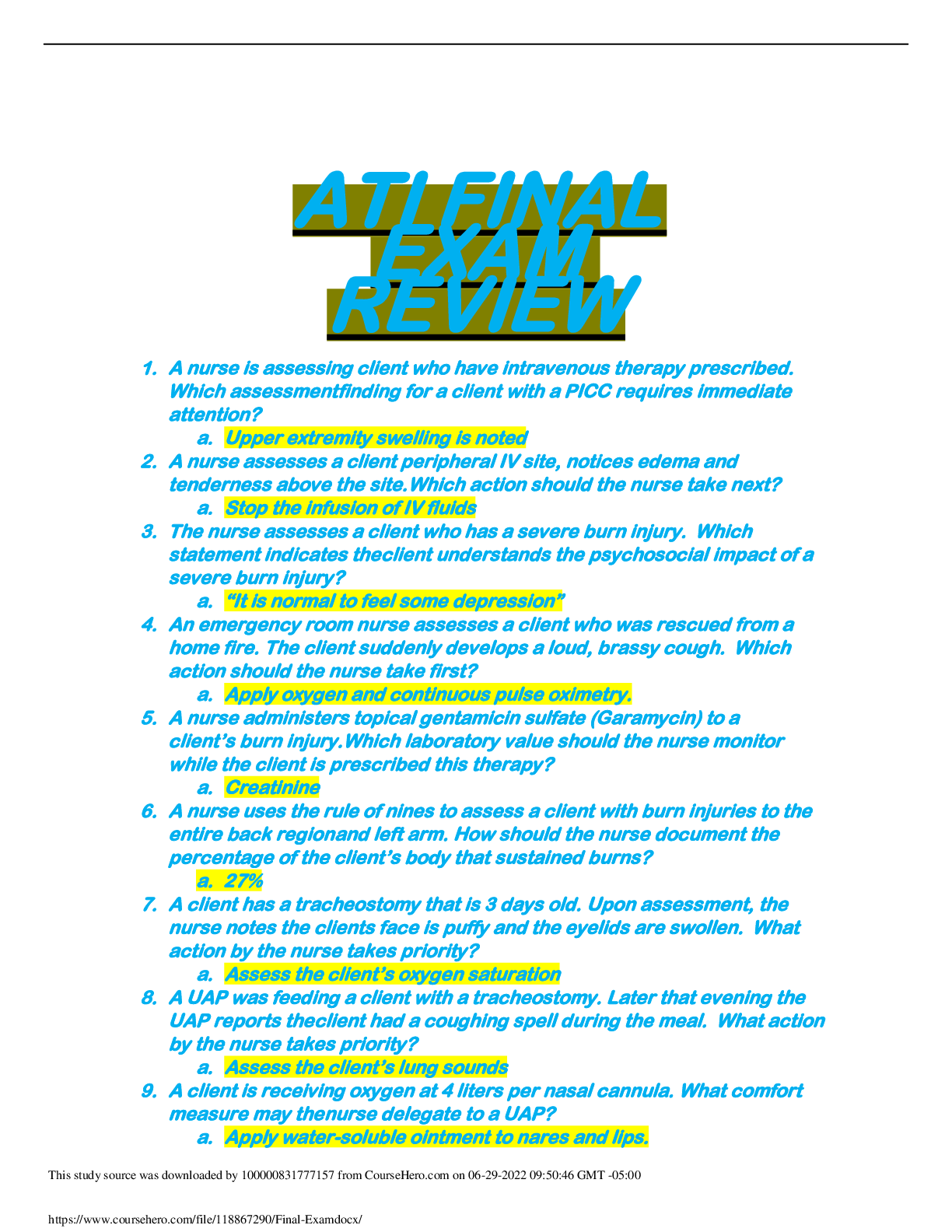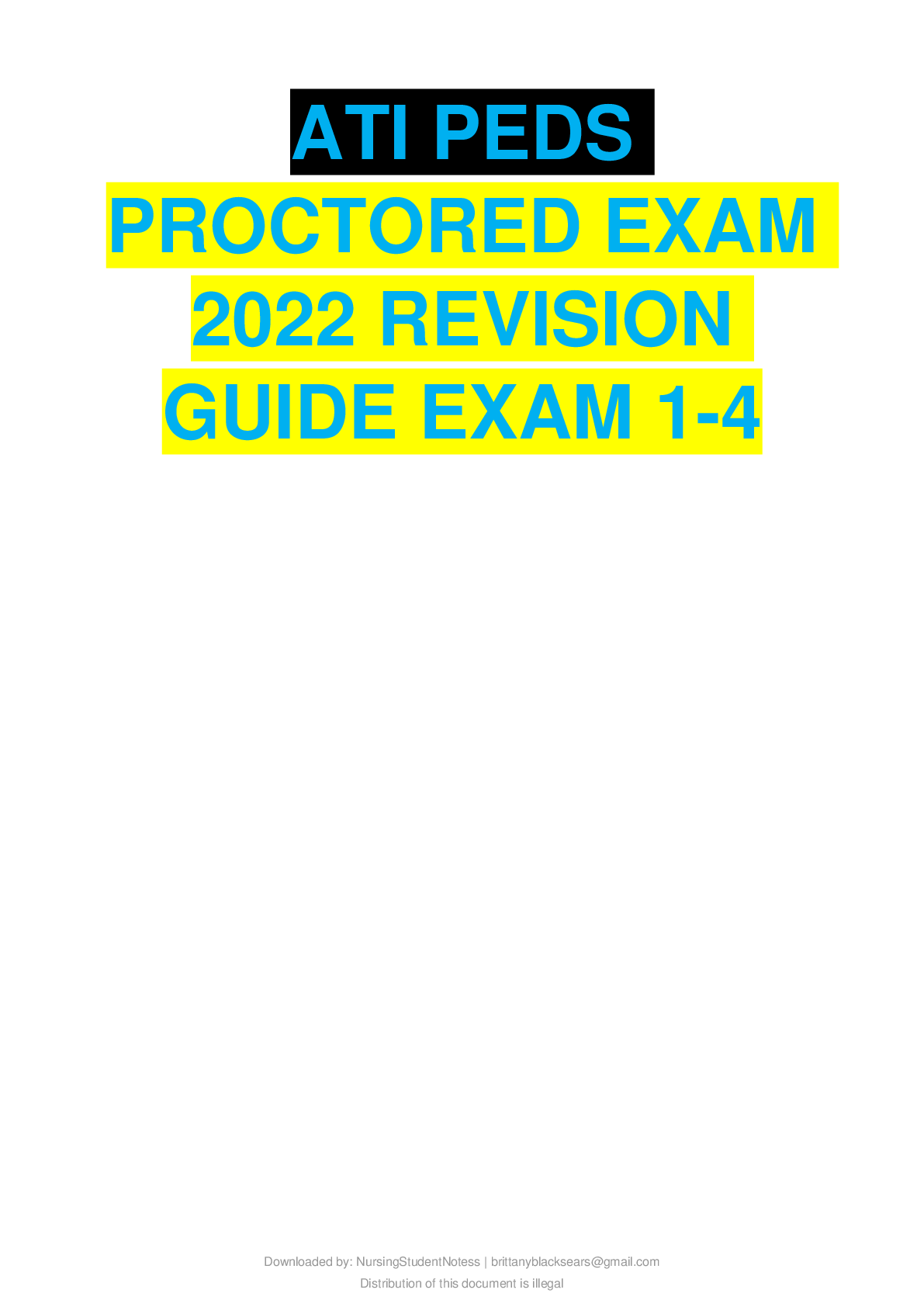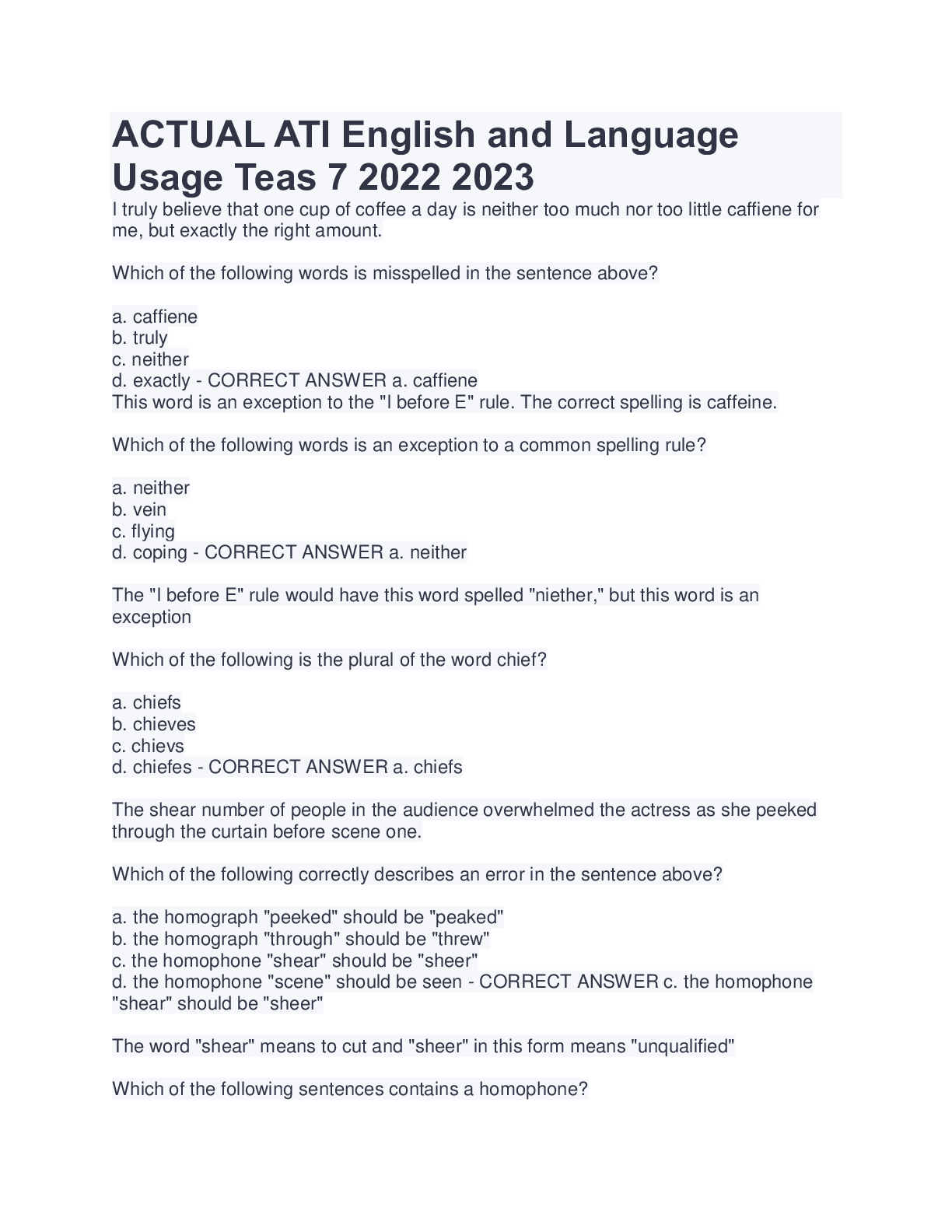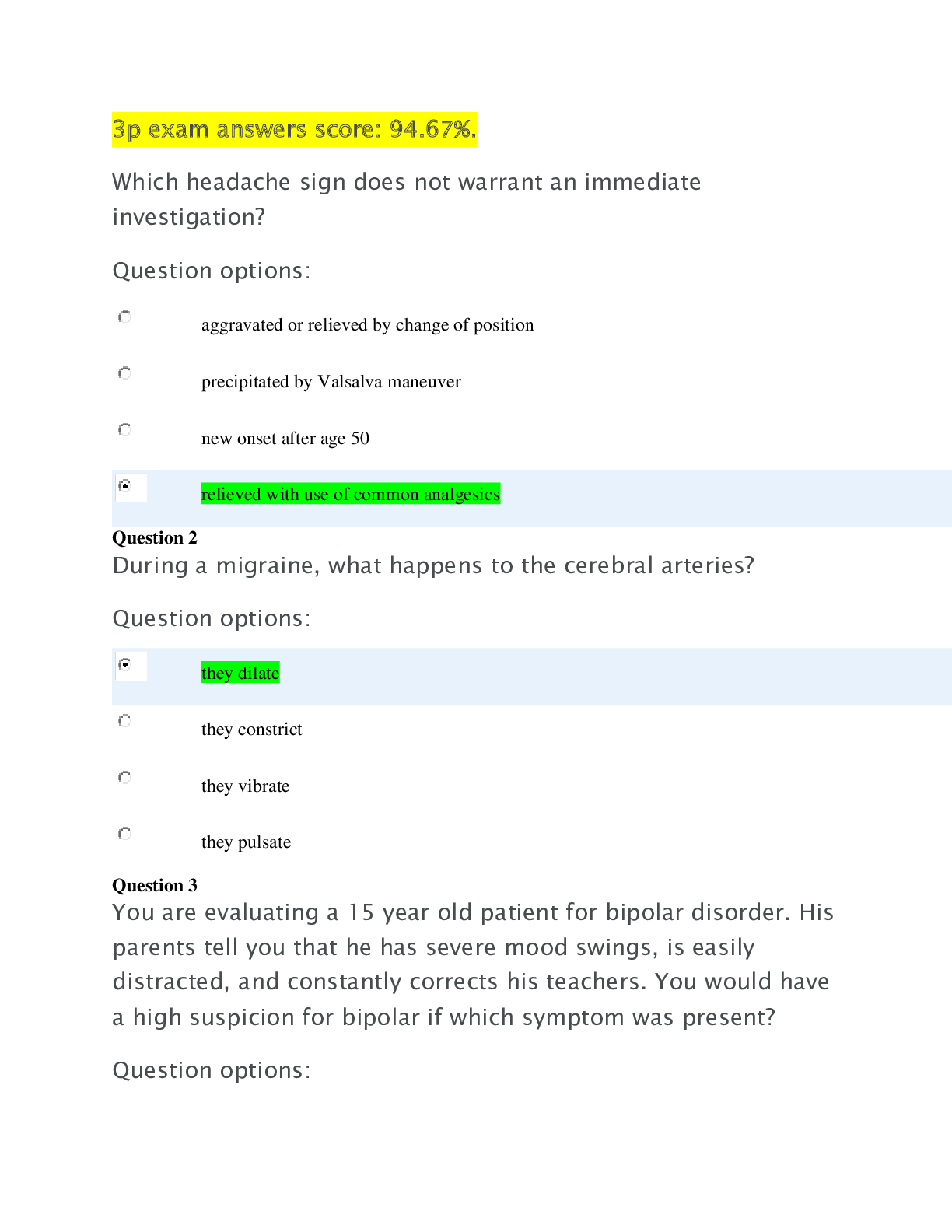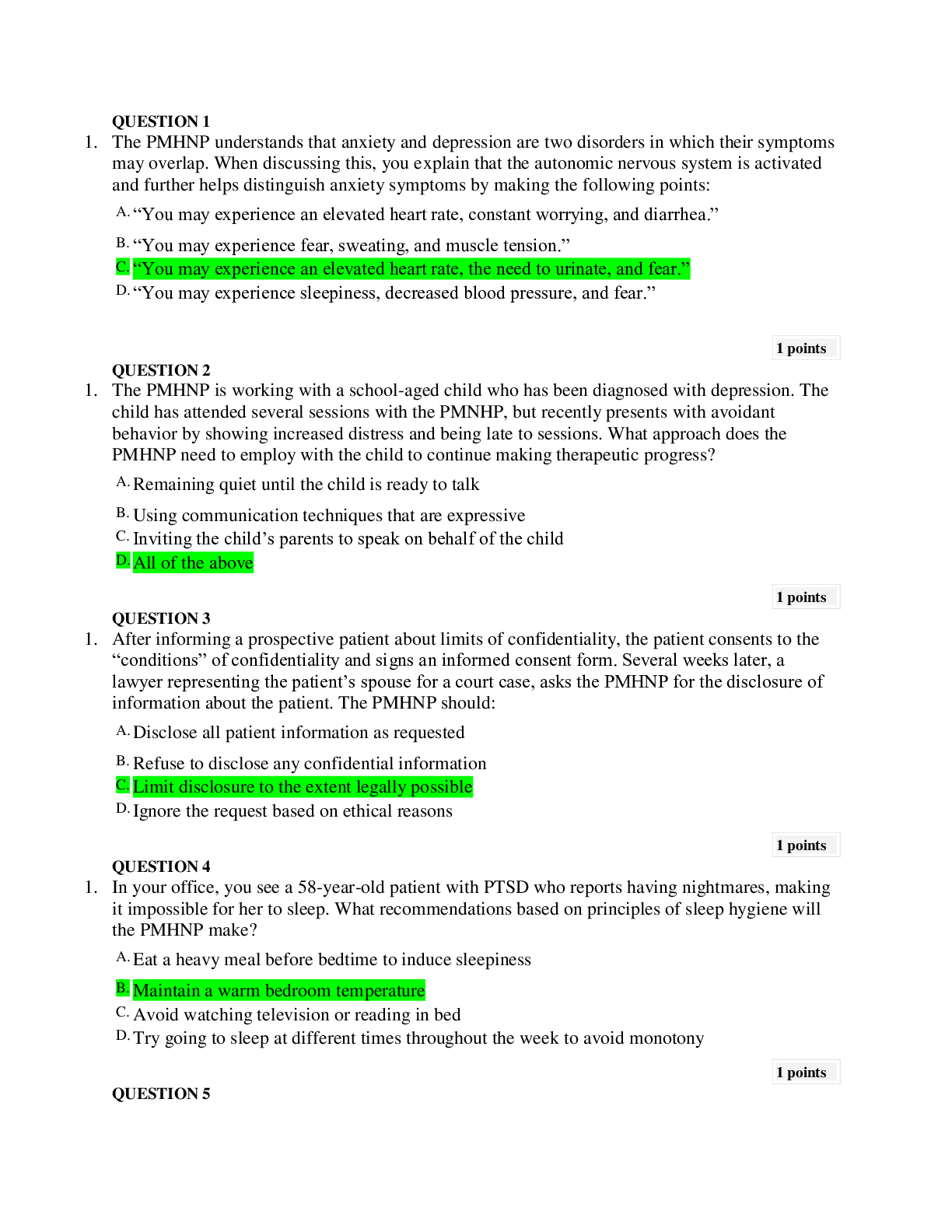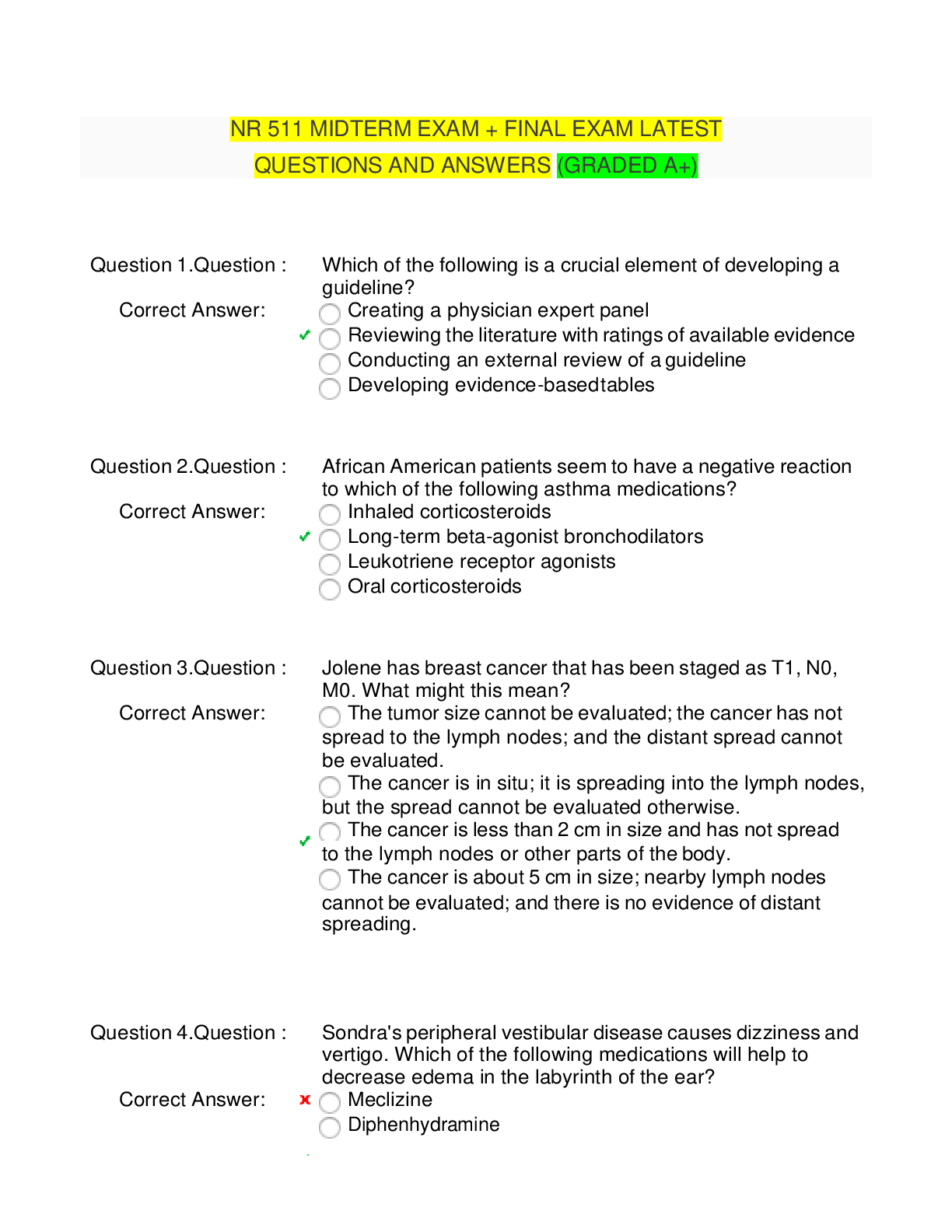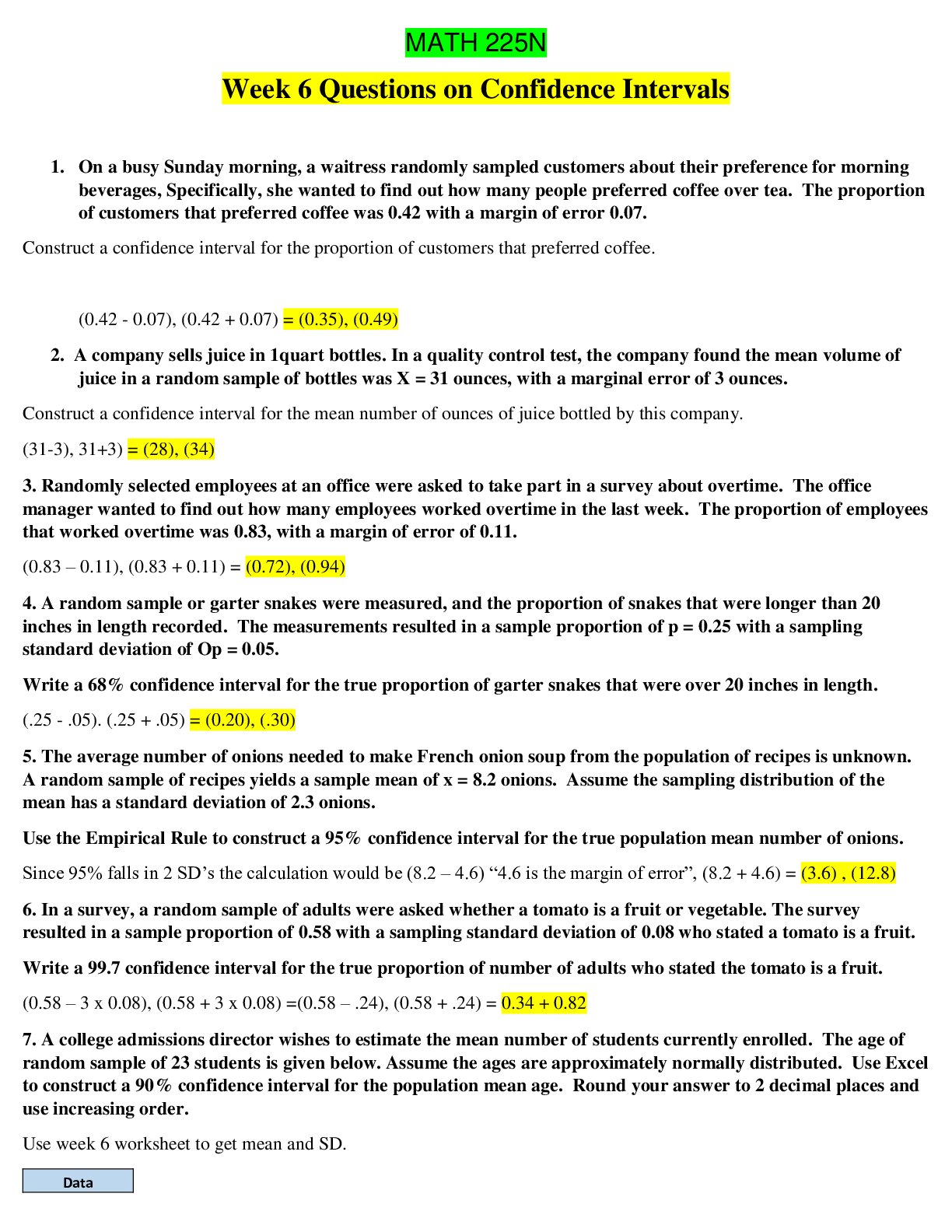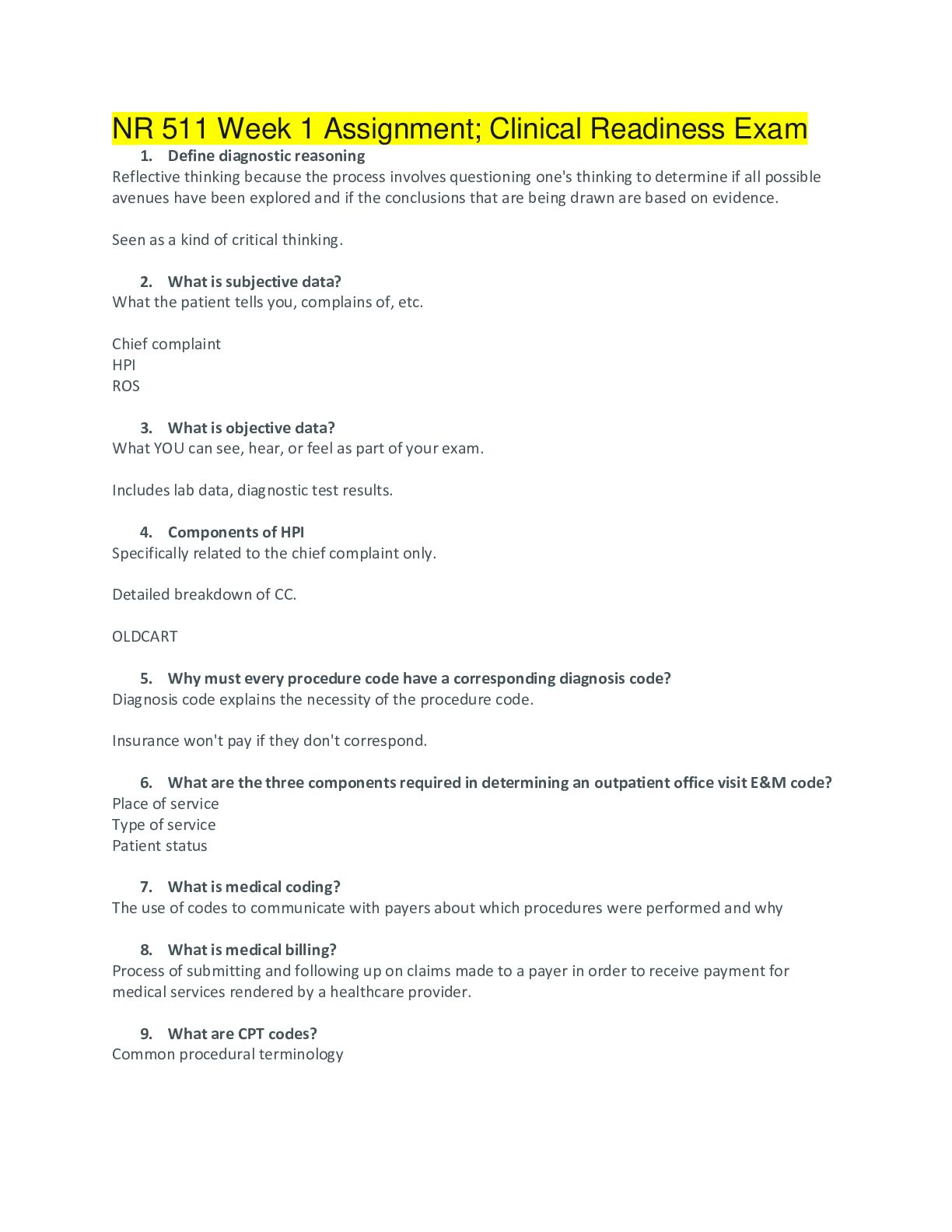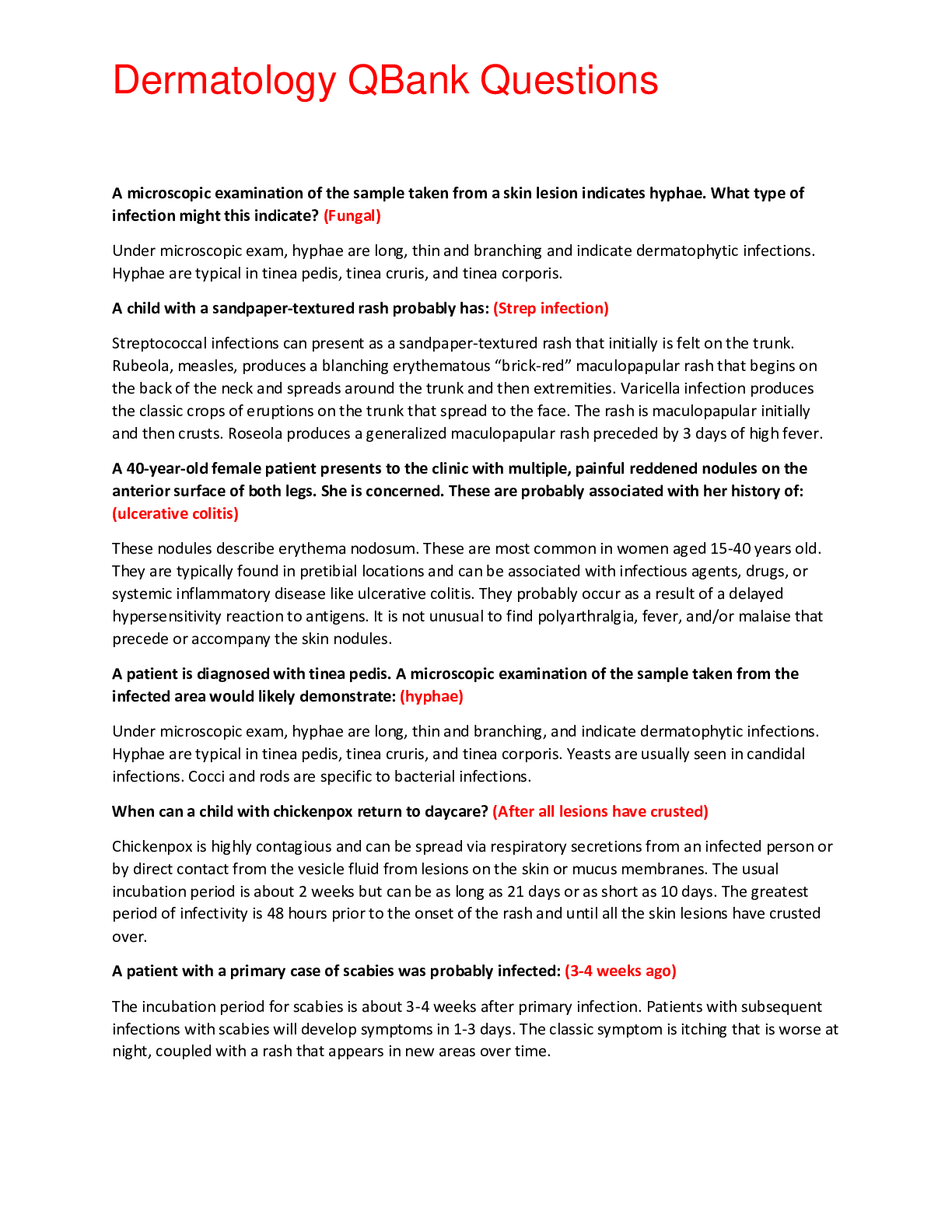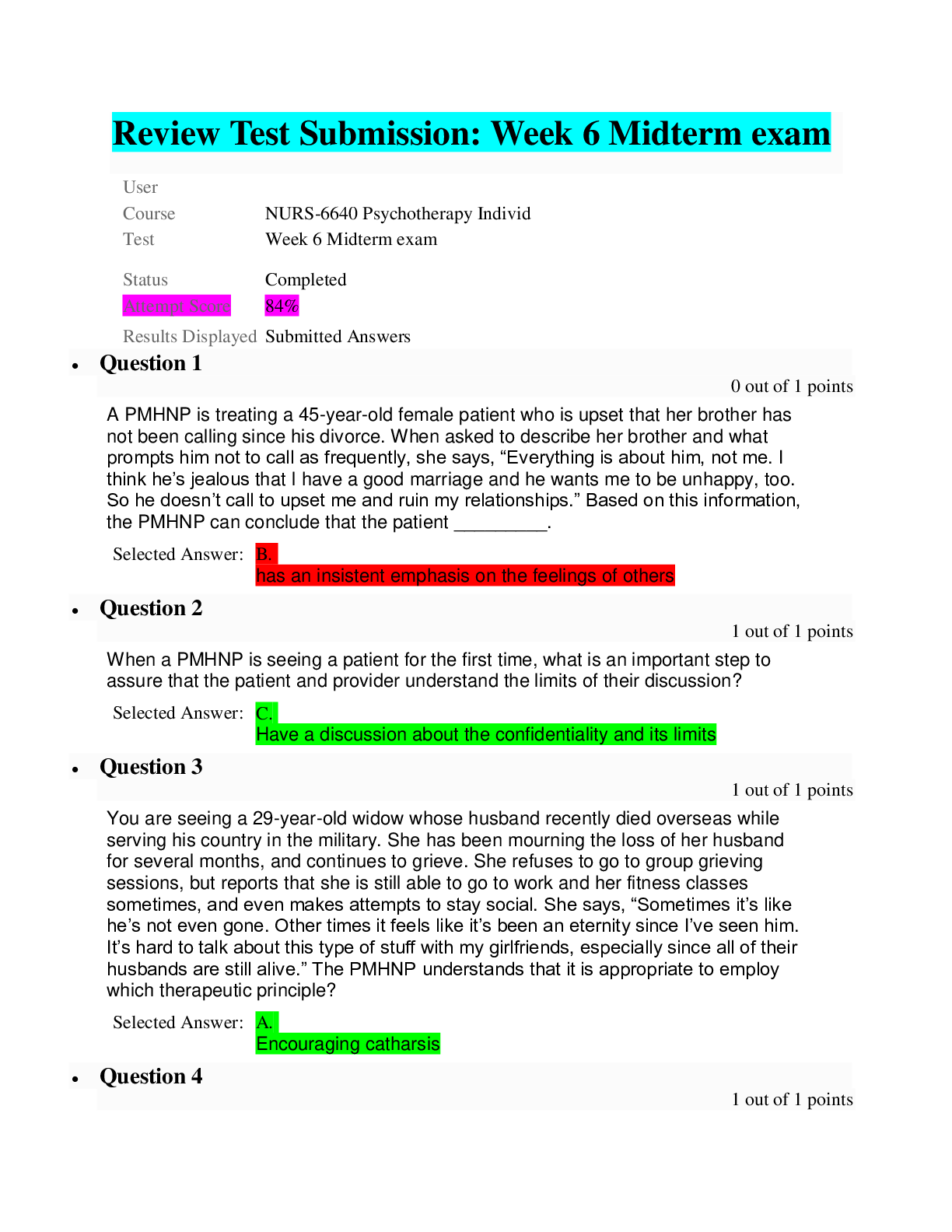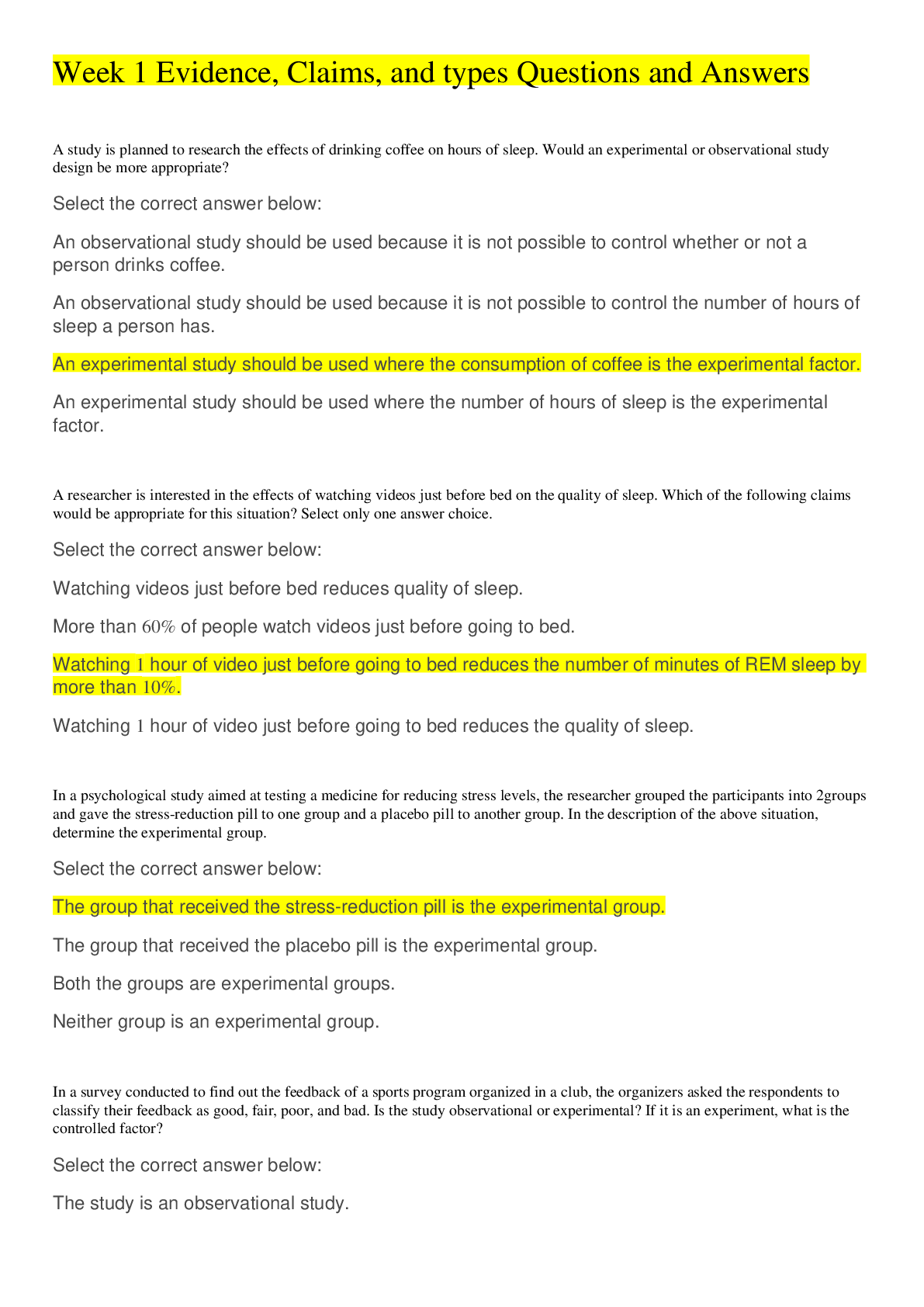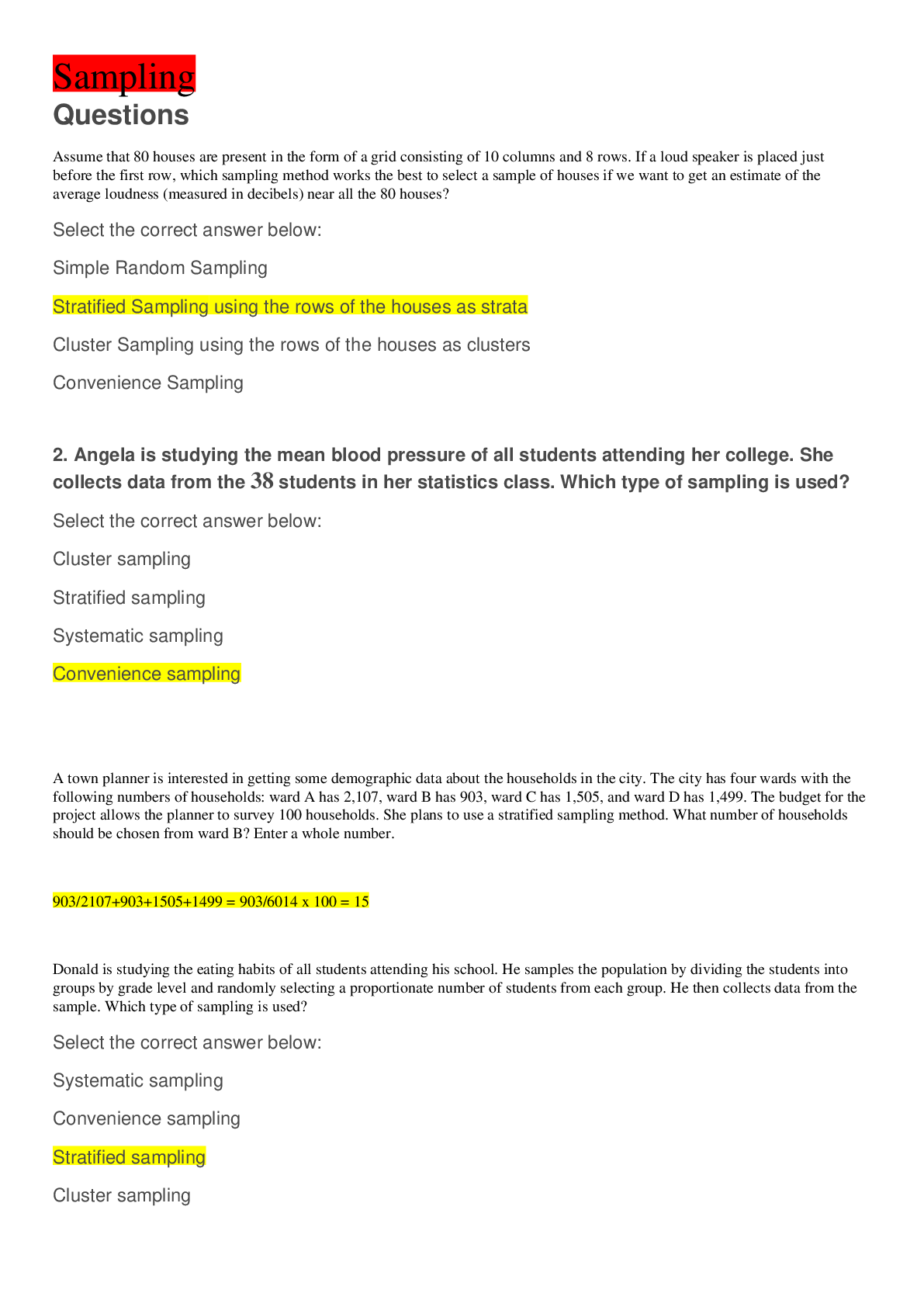Health Care > EXAM > ATI MISC MED SURG PROCTORED 2023 EXAM QUESTIONS AND HIGHLIGHTED ANSWERS GRADED + 1. The nurse is (All)
ATI MISC MED SURG PROCTORED 2023 EXAM QUESTIONS AND HIGHLIGHTED ANSWERS GRADED + 1. The nurse is providing a complete bed bath to a patient using a commercial bath cleansing pack (bag bath). What should the nurse do? a. Rinse thoroughly. b. Allow the skin to air-dry. c. Do not use a bath towel. d. Dry the skin with a towel. ANS: B The nurse should allow the skin to air-dry for 30 seconds. Drying the skin with a towel removes the emollient that is left behind after the water/cleanser solution evaporates. It is permissible to lightly cover the patient with a bath blanket or towel to prevent chilling. Do not rinse when using a bag bath. 2. A nurse is providing perineal care to a female patient. Which washing technique will the nurse use? a. Back to front b. In a circular motion c. From pubic area to rectum d. Upward from rectum to pubic area ANS: C Cleansing from pubic area to rectum (front to back) reduces the transfer of microorganisms to the urinary meatus and decreases the risk of urinary tract infection. Cleansing from rectum to pubic area or back to front increases the risk of urinary tract infection. Circular motions are used in male perineal care. 3. The nurse is providing perineal care to an uncircumcised male patient. Which action will the nurse take? a. Leave the foreskin alone because there is little chance of infection. 1 b. Retract the foreskin for cleansing and allow it to return on its own. c. Retract the foreskin and return it to its natural position when done. d. Leave the foreskin retracted. ANS: C Return the foreskin to its natural position. Keeping the foreskin retracted leads to tightening of the foreskin around the shaft of the penis, causing local edema and discomfort. The foreskin may not return to its natural position on its own. Patients at greatest risk for infection are uncircumcised males. 4. Which instruction will the nurse provide to the nursing assistive personnel when providing foot care for a patient with diabetes? a. Do not place slippers on the patient’s feet. b. Trim the patient’s toenails daily. c. Report sores on the patient’s toes. d. Check the brachial artery. ANS: C Report any changes that may indicate inflammation or injury to tissue. Do not allow the diabetic patient to go barefoot; injury can lead to amputations. Clipping toenails is not allowed. Patients with peripheral vascular disease or diabetes mellitus often require nail care from a specialist to reduce the risk of infection. When assessing the patient’s feet, the nurse palpates the dorsalis pedis of the foot, not the brachial artery. 5. The debilitated patient is resisting attempts by the nurse to provide oral hygiene. Which action will the nurse take next? a. Insert an oral airway. b. Place the patient in a flat, supine position. c. Use undiluted hydrogen peroxide as a cleaner. d. Quickly proceed while not talking to the patient.
Document Content and Description Below
ATI MISC MED SURG PROCTORED 2023 EXAM QUESTIONS AND HIGHLIGHTED ANSWERS GRADED + 1. The nurse is providing a complete bed bath to a patient using a commercial bath cleansing pack (bag bath). Wh... at should the nurse do? a. Rinse thoroughly. b. Allow the skin to air-dry. c. Do not use a bath towel. d. Dry the skin with a towel. ANS: B The nurse should allow the skin to air-dry for 30 seconds. Drying the skin with a towel removes the emollient that is left behind after the water/cleanser solution evaporates. It is permissible to lightly cover the patient with a bath blanket or towel to prevent chilling. Do not rinse when using a bag bath. 2. A nurse is providing perineal care to a female patient. Which washing technique will the nurse use? a. Back to front b. In a circular motion c. From pubic area to rectum d. Upward from rectum to pubic area ANS: C Cleansing from pubic area to rectum (front to back) reduces the transfer of microorganisms to the urinary meatus and decreases the risk of urinary tract infection. Cleansing from rectum to pubic area or back to front increases the risk of urinary tract infection. Circular motions are used in male perineal care. 3. The nurse is providing perineal care to an uncircumcised male patient. Which action will the nurse take? a. Leave the foreskin alone because there is little chance of infection. 1 b. Retract the foreskin for cleansing and allow it to return on its own. c. Retract the foreskin and return it to its natural position when done. d. Leave the foreskin retracted. ANS: C Return the foreskin to its natural position. Keeping the foreskin retracted leads to tightening of the foreskin around the shaft of the penis, causing local edema and discomfort. The foreskin may not return to its natural position on its own. Patients at greatest risk for infection are uncircumcised males. 4. Which instruction will the nurse provide to the nursing assistive personnel when providing foot care for a patient with diabetes? a. Do not place slippers on the patient’s feet. b. Trim the patient’s toenails daily. c. Report sores on the patient’s toes. d. Check the brachial artery. ANS: C Report any changes that may indicate inflammation or injury to tissue. Do not allow the diabetic patient to go barefoot; injury can lead to amputations. Clipping toenails is not allowed. Patients with peripheral vascular disease or diabetes mellitus often require nail care from a specialist to reduce the risk of infection. When assessing the patient’s feet, the nurse palpates the dorsalis pedis of the foot, not the brachial artery. 5. The debilitated patient is resisting attempts by the nurse to provide oral hygiene. Which action will the nurse take next? a. Insert an oral airway. b. Place the patient in a flat, supine position. c. Use undiluted hydrogen peroxide as a cleaner. d. Quickly proceed while not talking to the patient. 1. The nurse is providing a complete bed bath to a patient using a commercial bath cleansing pack (bag bath). What should the nurse do? a. Rinse thoroughly. b. Allow the skin to air-dry. c. Do not use a bath towel. d. Dry the skin with a towel. ANS: B The nurse should allow the skin to air-dry for 30 seconds. Drying the skin with a towel removes the emollient that is left behind after the water/cleanser solution evaporates. It is permissible to lightly cover the patient with a bath blanket or towel to prevent chilling. Do not rinse when using a bag bath. 2. A nurse is providing perineal care to a female patient. Which washing technique will the nurse use? a. Back to front b. In a circular motion c. From pubic area to rectum d. Upward from rectum to pubic area ANS: C Cleansing from pubic area to rectum (front to back) reduces the transfer of microorganisms to the urinary meatus and decreases the risk of urinary tract infection. Cleansing from rectum to pubic area or back to front increases the risk of urinary tract infection. Circular motions are used in male perineal care. 3. The nurse is providing perineal care to an uncircumcised male patient. Which action will the nurse take? a. Leave the foreskin alone because there is little chance of infection. 1 b. Retract the foreskin for cleansing and allow it to return on its own. c. Retract the foreskin and return it to its natural position when done. d. Leave the foreskin retracted. ANS: C Return the foreskin to its natural position. Keeping the foreskin retracted leads to tightening of the foreskin around the shaft of the penis, causing local edema and discomfort. The foreskin may not return to its natural position on its own. Patients at greatest risk for infection are uncircumcised males. 4. Which instruction will the nurse provide to the nursing assistive personnel when providing foot care for a patient with diabetes? a. Do not place slippers on the patient’s feet. b. Trim the patient’s toenails daily. c. Report sores on the patient’s toes. d. Check the brachial artery. ANS: C Report any changes that may indicate inflammation or injury to tissue. Do not allow the diabetic patient to go barefoot; injury can lead to amputations. Clipping toenails is not allowed. Patients with peripheral vascular disease or diabetes mellitus often require nail care from a specialist to reduce the risk of infection. When assessing the patient’s feet, the nurse palpates the dorsalis pedis of the foot, not the brachial artery. 5. The debilitated patient is resisting attempts by the nurse to provide oral hygiene. Which action will the nurse take next? a. Insert an oral airway. b. Place the patient in a flat, supine position. c. Use undiluted hydrogen peroxide as a cleaner. d. Quickly proceed while not talking to the patient. [Show More]
Last updated: 1 year ago
Preview 1 out of 24 pages
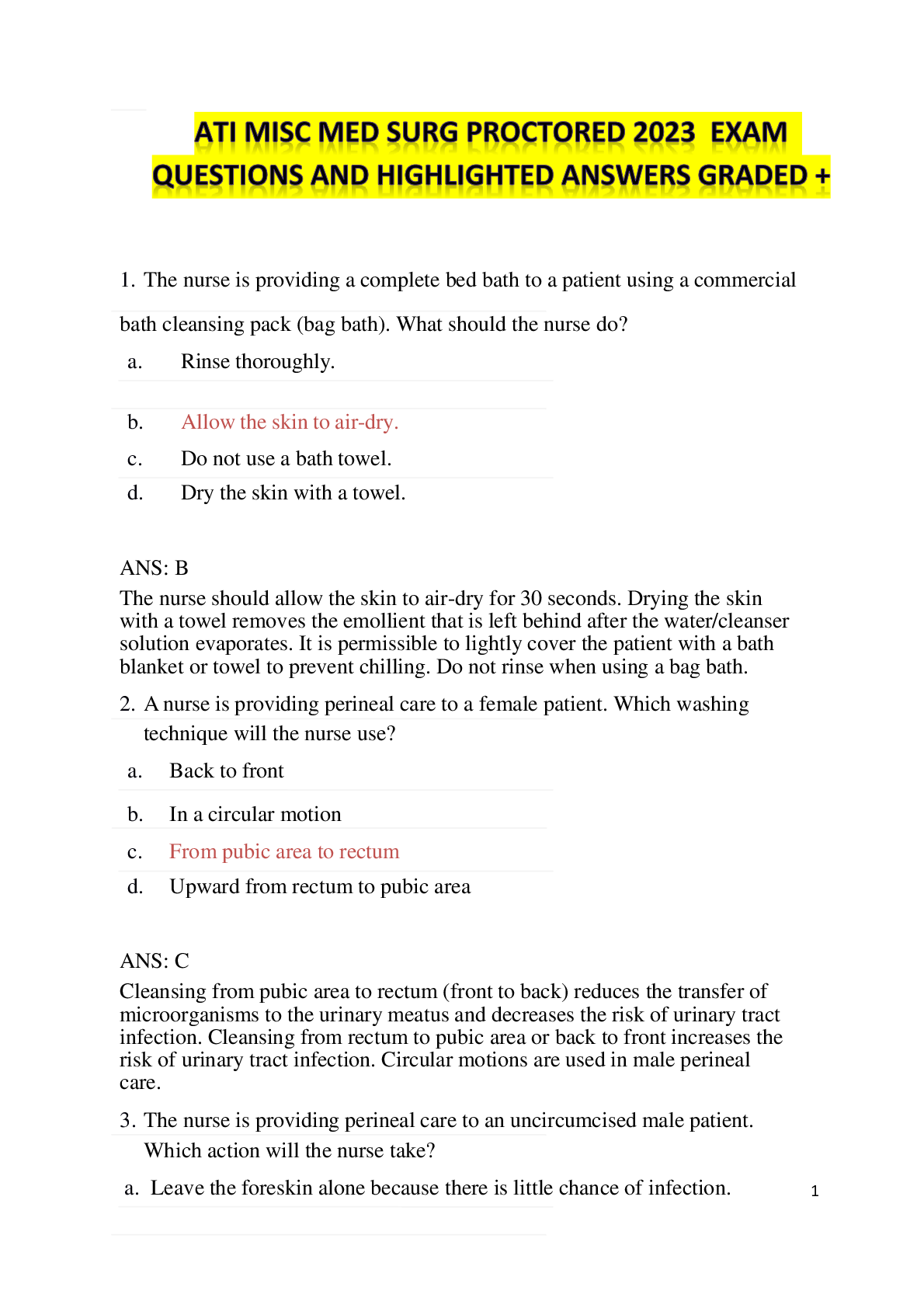
Buy this document to get the full access instantly
Instant Download Access after purchase
Add to cartInstant download
We Accept:

Reviews( 0 )
$16.00
Document information
Connected school, study & course
About the document
Uploaded On
Feb 18, 2023
Number of pages
24
Written in
Additional information
This document has been written for:
Uploaded
Feb 18, 2023
Downloads
0
Views
42

